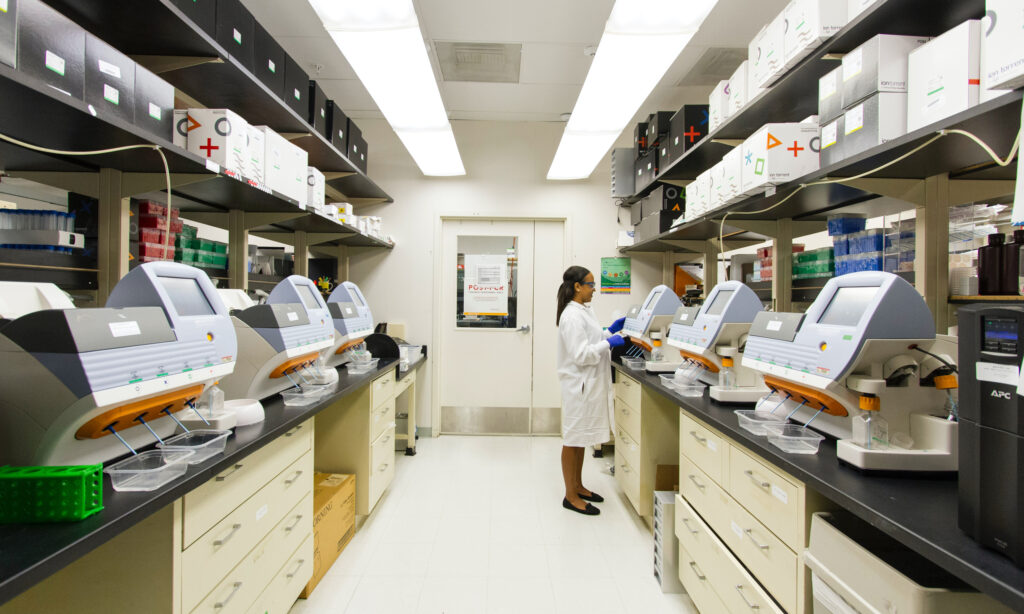Antiquated administrative systems have plagued the healthcare industry for years. In fact, the Harvard Business Review found that an estimated 14% of wasted health care spending—$91 billion—is the result of inefficient administration.
Inefficiency wastes resources and reduces the quality of care for patients. The good news is, healthcare providers are beginning to leverage Artificial Intelligence (AI) to modernize healthcare operations.
Shifting to AI saves dollars, and most importantly, lives. But, despite the many benefits, most healthcare executives don’t have a clear AI strategy. Following the right path forward requires a better understanding of AI healthcare solutions.
Let’s take a close look at how leading companies are implementing AI-powered solutions in 2021 to save valuable resources and accurately detect cancer at earlier stages.
Leveraging AI for data sharing and diagnostic power to deliver more efficient care—and better patient outcomes
The American Medical Association conducted a study to see how long it took doctors to perform ordinary tasks using the current electronic health records system.
The results were not encouraging: tapering a basic steroid dose meant manually calculating numbers taken from multiple digital interfaces, which required 20-42 separate clicks, and all that back and forth produced an error rate as high as 50%.
The data challenges facing other healthcare workers are just as daunting. Nurses in the US spend, on average, 25% of their time on administrative and regulatory tasks, which helps explain how the US can spend $600 billion every year on healthcare administration and billing.
Manual data entry results in human error, which costs millions on the insurer level as every record is checked to make sure claims have been filed correctly. And mistakes still slip through the cracks, which results in nightmarish experiences for patients.
AI can solve many of these challenges, resulting in better outcomes for everyone involved.
AI Helps Doctors Save Lives
Using AI, brain surgeons can now diagnose brain tumors faster. They can also detect problems they may have missed in the past, such as tumor growth along nerve fibers.
Deep learning algorithms make this advancement possible. Google’s DeepMind AI is an example of deep learning innovation. In a recent study on DeepMind’a ability to detect lung cancer, the leading cause of cancer death in the US, the algorithm was trained on 42,000 CT scans and it produced 11% fewer false positives and 5% fewer false negatives than trained cardiologists.
The early detection capabilities of AI will revolutionize the way doctors treat lung cancer for one simple reason: about 70% of cases are detected in the later stages of cancer when it’s much harder to treat and has a much lower survivability rate.
As one oncologist put it, ”People ignore a cough.” And because early symptoms of lung cancer resemble common maladies, when patients finally do go see a doctor, it’s often too late. But that changes with a more regular and rigorous regiment of AI-powered CT scans.
AI Healthcare Example: Olive
Olive is an AI-powered data processing tool. Currently valued at $4 billion and implemented by 900 hospitals around the country, Olive automates the high-volume, repetitive tasks, like insurance benefits verification, that waste time, with the goal of making the entire administrative system faster and more accurate.
Olive rolled out Olive Assures to automate the provider payment process, as well as Olive Help, which uses desktop workstation sensors to create a “superhuman sidekick” for healthcare workers.
AI Healthcare Example: Digital Mammography DREAM Challenge
Conducted by IBM Research, Sage Bionetworks, Kaiser Permanente Washington Health Research Institute, and the University of Washington School of Medicine, the Digital Mammography DREAM Challenge invited AI startups and research teams to examine more than 144,000 screening exams of 85,580 women and then determine the likelihood they would develop breasts cancer in the next 12 months.
When the top-performing AI algorithms were paired with the assessments of radiologists, the rate of detection increased to 92% from a baseline of 85.9% using only human detection.
The results of the DREAM Challenge show the promise and possibilities of AI in cancer detection, especially when combined with the best of what humans have to offer.
AI will power the patient-centric future
By leveraging AI-powered automation, doctors and nurses can spend more time putting their patients first, and save the lives of those suffering from hard-to-detect diseases. Connect with a Hero Digital healthcare specialist to discover how you can implement AI for a patient-centric future.








